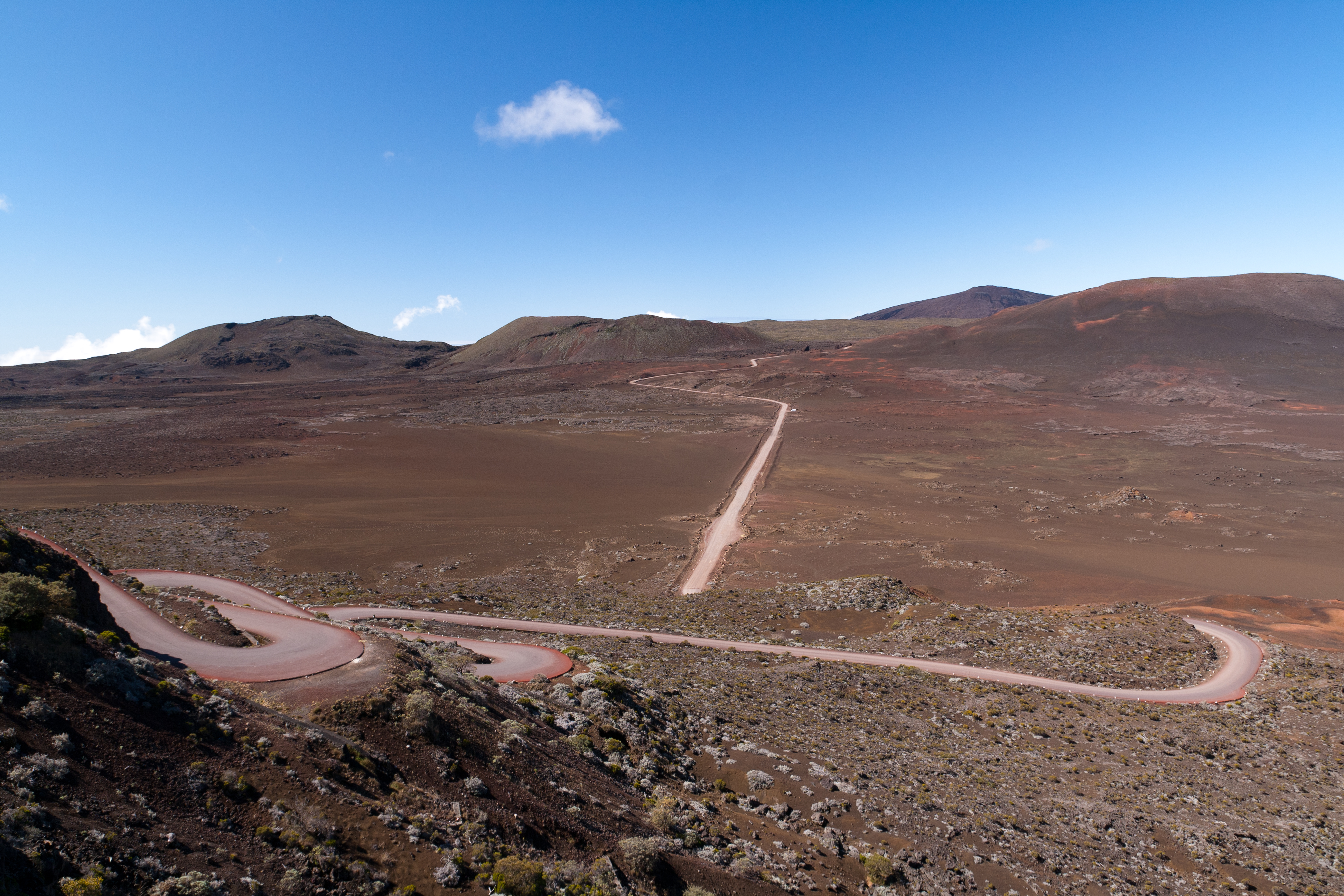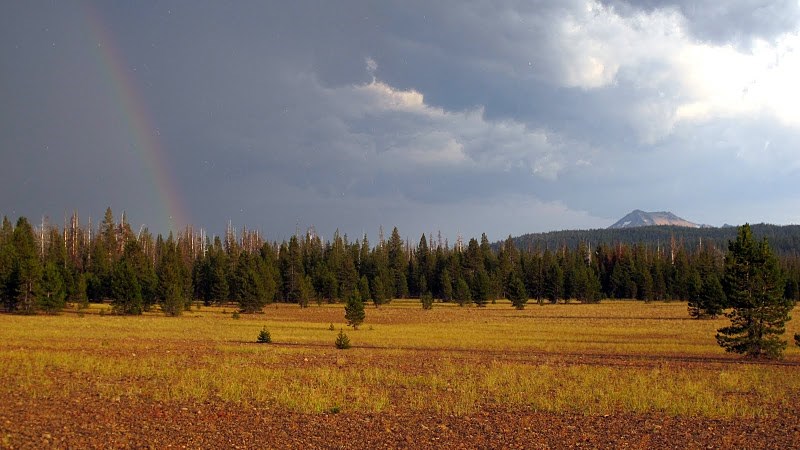|
Volcanic Desert
A volcanic desert is an area devoid of vegetation because of volcanic activity. The term is usually applied to larger areas such as the Highlands of Iceland, the Rangipo Desert in New Zealand or Cordón Caulle in Chile. Occasionally though, it is used for relatively small regions such as the Kaʻū Desert on the island of Hawaiʻi. Volcanic deserts may have enough precipitation to sustain vegetation, but due to repeated covering of tephra and acid rain after eruptions and high percolation and infiltration rates of water, vegetation is scarce. In addition to this volcanic desert shows often poor or little soil formation due to slow chemical weathering caused by cold climate or coarse tephra. This is how the Plaine des Sables, on the island of Réunion, can find itself close to the Commerson Crater, a place which holds several world records of rainfall. Examples * Highlands of Iceland, in Iceland. * Kaʻū Desert, in the United States. * Plaine des Sables, in France. * Pum ... [...More Info...] [...Related Items...] OR: [Wikipedia] [Google] [Baidu] |
Plaine Des Sables
The Plaine des Sables ( en, "Sands Plain") is a volcanic plateau in the mountains of Réunion. Part of the Piton de la Fournaise massif, this volcanic desert is situated at the border of Saint-Joseph and Sainte-Rose, within Réunion National Park Réunion National Park (french: Parc national de La Réunion) is a National Park of France located on the island of Réunion, an overseas department in the western Indian Ocean. Established on 5 March 2007, the park protects the endemic ecosys .... References Sables Sables Sables Volcanic deserts Deserts of Africa Saint-Joseph, Réunion Réunion National Park {{Reunion-geo-stub ... [...More Info...] [...Related Items...] OR: [Wikipedia] [Google] [Baidu] |
New Zealand
New Zealand ( mi, Aotearoa ) is an island country in the southwestern Pacific Ocean. It consists of two main landmasses—the North Island () and the South Island ()—and over 700 smaller islands. It is the sixth-largest island country by area, covering . New Zealand is about east of Australia across the Tasman Sea and south of the islands of New Caledonia, Fiji, and Tonga. The country's varied topography and sharp mountain peaks, including the Southern Alps, owe much to tectonic uplift and volcanic eruptions. New Zealand's capital city is Wellington, and its most populous city is Auckland. The islands of New Zealand were the last large habitable land to be settled by humans. Between about 1280 and 1350, Polynesians began to settle in the islands and then developed a distinctive Māori culture. In 1642, the Dutch explorer Abel Tasman became the first European to sight and record New Zealand. In 1840, representatives of the United Kingdom and Māori chiefs ... [...More Info...] [...Related Items...] OR: [Wikipedia] [Google] [Baidu] |
Pumice Desert
Pumice Desert is a dry meadow in Crater Lake National Park. It covers and is located along the North Entrance Park Road. Pumice Desert was a glacial valley before the eruption of Mount Mazama 7,700 years ago. The valley was buried in over of pumice and scoria during the eruptions and subsequent avalanches. The area was designated as a Research Natural Area Research Natural Area is a designation for certain protected areas in the United States. Research Natural Areas (RNAs) are part of a nationwide network of ecological areas set aside for both research and education. The network includes areas ma ... due to the environment's harsh, "desert"-like quality resulting from the deep and highly porous deposits. There are currently only 16 species of plant documented in this area. References {{Reflist Crater Lake National Park Volcanic deserts ... [...More Info...] [...Related Items...] OR: [Wikipedia] [Google] [Baidu] |
France
France (), officially the French Republic ( ), is a country primarily located in Western Europe. It also comprises of Overseas France, overseas regions and territories in the Americas and the Atlantic Ocean, Atlantic, Pacific Ocean, Pacific and Indian Oceans. Its Metropolitan France, metropolitan area extends from the Rhine to the Atlantic Ocean and from the Mediterranean Sea to the English Channel and the North Sea; overseas territories include French Guiana in South America, Saint Pierre and Miquelon in the North Atlantic, the French West Indies, and many islands in Oceania and the Indian Ocean. Due to its several coastal territories, France has the largest exclusive economic zone in the world. France borders Belgium, Luxembourg, Germany, Switzerland, Monaco, Italy, Andorra, and Spain in continental Europe, as well as the Kingdom of the Netherlands, Netherlands, Suriname, and Brazil in the Americas via its overseas territories in French Guiana and Saint Martin (island), ... [...More Info...] [...Related Items...] OR: [Wikipedia] [Google] [Baidu] |
United States
The United States of America (U.S.A. or USA), commonly known as the United States (U.S. or US) or America, is a country primarily located in North America. It consists of 50 states, a federal district, five major unincorporated territories, nine Minor Outlying Islands, and 326 Indian reservations. The United States is also in free association with three Pacific Island sovereign states: the Federated States of Micronesia, the Marshall Islands, and the Republic of Palau. It is the world's third-largest country by both land and total area. It shares land borders with Canada to its north and with Mexico to its south and has maritime borders with the Bahamas, Cuba, Russia, and other nations. With a population of over 333 million, it is the most populous country in the Americas and the third most populous in the world. The national capital of the United States is Washington, D.C. and its most populous city and principal financial center is New York City. Paleo-Americ ... [...More Info...] [...Related Items...] OR: [Wikipedia] [Google] [Baidu] |
Iceland
Iceland ( is, Ísland; ) is a Nordic island country in the North Atlantic Ocean and in the Arctic Ocean. Iceland is the most sparsely populated country in Europe. Iceland's capital and largest city is Reykjavík, which (along with its surrounding areas) is home to over 65% of the population. Iceland is the biggest part of the Mid-Atlantic Ridge that rises above sea level, and its central volcanic plateau is erupting almost constantly. The interior consists of a plateau characterised by sand and lava fields, mountains, and glaciers, and many glacial rivers flow to the sea through the lowlands. Iceland is warmed by the Gulf Stream and has a temperate climate, despite a high latitude just outside the Arctic Circle. Its high latitude and marine influence keep summers chilly, and most of its islands have a polar climate. According to the ancient manuscript , the settlement of Iceland began in 874 AD when the Norwegian chieftain Ingólfr Arnarson became the first p ... [...More Info...] [...Related Items...] OR: [Wikipedia] [Google] [Baidu] |
Plaine Des Sables 2015
{{disambiguation ...
Plaine may refer to: * Plaine (river), a tributary of the river Meurthe in France * Plaine, Bas-Rhin, a commune in Alsace in north-eastern France * Plaine-Haute, a commune in the Côtes-d'Armor department in Brittany in northwestern France * Plaine Morte Glacier, a glacier in the canton of Bern in Switzerland * Belle Plaine (other) * La Plaine (other) See also * Plain (other) A plain is a flat, sweeping landmass. Plain may also refer to: Places * Plain, Texas, U.S. * Plain, Washington, U.S. * Plain, Wisconsin, U.S. * Plain City (other), several places * Plain Township (other), several places Musi ... [...More Info...] [...Related Items...] OR: [Wikipedia] [Google] [Baidu] |
Commerson Crater
Commerson Crater is a caldera in the mountains of Réunion, an overseas department of France. Located in the municipal territory of Saint-Joseph, it is part of the Piton de la Fournaise, a shield volcano on the eastern end of Réunion Island, but is located outside of the Enclos Fouqué, the volcano's most recent caldera. The caldera was named in honor of Philibert Commerson, a French explorer. Climate Due to its elevated position, Commerson Crater receives considerable amounts of rainfall, especially during tropical storms. During Cyclone Hyacinthe in January 1980, it received of rainfall in 15 days, the most precipitation dropped by a tropical cyclone in a single location. The second greatest amount of rainfall in a single tropical cyclone also occurred in Commerson Crater, when Cyclone Gamede Intense Tropical Cyclone Gamede was among the wettest tropical cyclones on record, dropping more than 5.5 m (18 ft) of rain in a nine-day period on Réunion island in the ... [...More Info...] [...Related Items...] OR: [Wikipedia] [Google] [Baidu] |
Réunion
Réunion (; french: La Réunion, ; previously ''Île Bourbon''; rcf, label= Reunionese Creole, La Rényon) is an island in the Indian Ocean that is an overseas department and region of France. It is located approximately east of the island of Madagascar and southwest of the island of Mauritius. , it had a population of 868,846. Like the other four overseas departments, Réunion also holds the status of a region of France, and is an integral part of the French Republic. Réunion is an outermost region of the European Union and is part of the eurozone. Réunion and the fellow French overseas department of Mayotte are the only eurozone regions located in the Southern Hemisphere. As in the rest of France, the official language of Réunion is French. In addition, a majority of the region's population speaks Réunion Creole. Toponymy When France took possession of the island in the seventeenth century, it was named Bourbon, after the dynasty that then ruled France. To break ... [...More Info...] [...Related Items...] OR: [Wikipedia] [Google] [Baidu] |
Weathering
Weathering is the deterioration of rocks, soils and minerals as well as wood and artificial materials through contact with water, atmospheric gases, and biological organisms. Weathering occurs ''in situ'' (on site, with little or no movement), and so is distinct from erosion, which involves the transport of rocks and minerals by agents such as water, ice, snow, wind, waves and gravity. Weathering processes are divided into ''physical'' and ''chemical weathering''. Physical weathering involves the breakdown of rocks and soils through the mechanical effects of heat, water, ice, or other agents. Chemical weathering involves the chemical reaction of water, atmospheric gases, and biologically produced chemicals with rocks and soils. Water is the principal agent behind both physical and chemical weathering, though atmospheric oxygen and carbon dioxide and the activities of biological organisms are also important. Chemical weathering by biological action is also known as biological wea ... [...More Info...] [...Related Items...] OR: [Wikipedia] [Google] [Baidu] |


